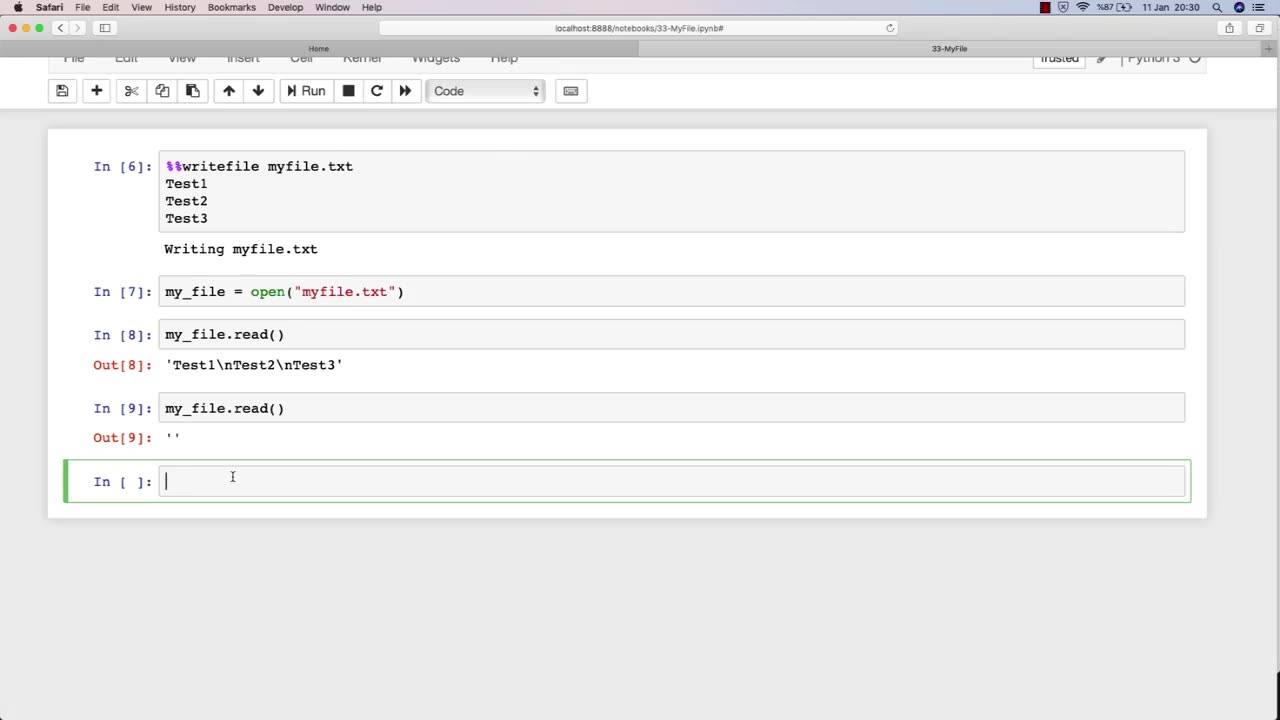Premium Only Content

Chapter-37, LEC-3 | Working With Files | #ethicalhacking #hacking #education
#ethicalhacking #hacking #rumble #virel #trending #education
Subscribe to our channel YouTube channel.❤️
/@thecybersecurityclassroom
Followe me on Rumble.💕
/@the1cybersequrityclassroom
Working with files is a fundamental aspect of using computers and involves creating, organizing, managing, and manipulating digital files stored on a computer or other devices. Files can be documents, images, videos, audio files, programs, and more, and they can be stored in various formats, such as text files, image files, audio files, or binary files.
The process of working with files typically includes several key tasks. These tasks may involve:
Creating files: This involves creating new files using software applications, such as word processors, spreadsheets, image editors, or audio recording software. Users can create new files from scratch or from templates, and then save them to a designated location on their computer or other storage devices.
Organizing files: Organizing files involves creating folders or directories to categorize and store files based on their content, purpose, or relevance. Users can create nested folders, rename folders, and move files or folders to different locations to keep their digital files well-organized and easily accessible.
Managing files: Managing files includes tasks such as copying, moving, deleting, and renaming files. Users can copy or move files from one location to another, delete unwanted files, and rename files to provide meaningful names that describe their content or purpose.
Editing files: Editing files involves making changes to the content or properties of files. This can include editing text in documents, modifying images, trimming or merging audio or video files, and making other modifications to files using appropriate software applications.
Backing up files: Backing up files is the process of creating copies of important files and storing them in a separate location to protect against data loss due to hardware failures, software errors, or other issues. Users can create backups of their files using various methods, such as manual file copying, cloud storage services, or backup software.
Sharing files: Sharing files involves sending files to others via email, file sharing services, or other methods. Users can attach files to emails, upload files to cloud storage services, or use other file sharing methods to collaborate, distribute, or exchange files with others.
Overall, working with files is a fundamental part of using computers and involves creating, organizing, managing, editing, backing up, and sharing digital files. Proper file management practices can help users stay organized, efficient, and productive in their digital workflows, while also ensuring the security and integrity of their important data.
#hacking #growthhacking #biohacking #ethicalhacking #lifehacking #whacking #hackingout #happyhacking #brainhacking #travelhacking #househacking #brainhackingum #hackingtools
#bushwhacking #hacking_or_secutiy #porthacking#porthacking #belajarhacking #hackinginstagram #growthacking #biohackingsecrets #realityhacking #neurohacking #hackingnews #funnelhacking #mindhacking #funnelhackinglive #hackinglife #termuxhacking #learnhacking #bodyhacking #patternhacking #biohackingsuccess #ikeahacking #hackingorsecurity #russianhacking #traumahacking #shackingup #hackinghealth #growthhackingtips #wifihacking
-
![[Ep 611] DOGE On The March! | Guest Sam Anthony - [your]NEWS | Seditious Dems | Ukraine](https://1a-1791.com/video/fwe1/97/s8/1/q/C/C/3/qCC3x.0kob-small-Ep-611-DOGE-On-The-March-Gu.jpg) LIVE
LIVE
The Nunn Report - w/ Dan Nunn
2 hours ago[Ep 611] DOGE On The March! | Guest Sam Anthony - [your]NEWS | Seditious Dems | Ukraine
296 watching -
 1:00:56
1:00:56
The Tom Renz Show
8 hours agoThe War On DOGE Is ALSO A War On The Economy
4.95K5 -
 1:30:16
1:30:16
Steve-O's Wild Ride! Podcast
5 days ago $0.84 earnedAri Shaffir Exposes The Dark Side of Podcasting - Wild Ride #252
11.3K1 -
 1:56:29
1:56:29
The Quartering
6 hours agoAirplane FLIPS and CRASHES, Sean Duffy Slams Pete Buttigieg, & What Happened with Patriarchy Hannah
66.8K28 -
 37:08
37:08
Standpoint with Gabe Groisman
22 hours agoDOGE The UK?! With Liz Truss
26.5K12 -
 56:39
56:39
SLS - Street League Skateboarding
6 days agoHIGHEST SCORING KNOCKOUT ROUND OF ALL TIME! Felipe Gustavo, Dashawn Jordan, Filipe Mota & more...
21.7K1 -
 14:26
14:26
Breaking Points
1 day agoWOKE VS BASED?: Saagar And Ryan Play A Game
24.2K6 -
 5:29:58
5:29:58
SoundBoardLord
8 hours agoThe Red Dead Journey Continues!!!
23.1K1 -
 1:17:31
1:17:31
The Officer Tatum
3 hours agoLIVE: Delta Airlines CRASH BLAMED On Trump, Ashley St. Claire Had Elon's BABY? + More | Ep 63
29.7K36 -
 1:38:08
1:38:08
vivafrei
6 hours agoAOC goes Full Criminal Lover? Mehdi Hasan Goes Full Terrorist? Another Plane Crash & MORE! Viva Frei
71.8K35